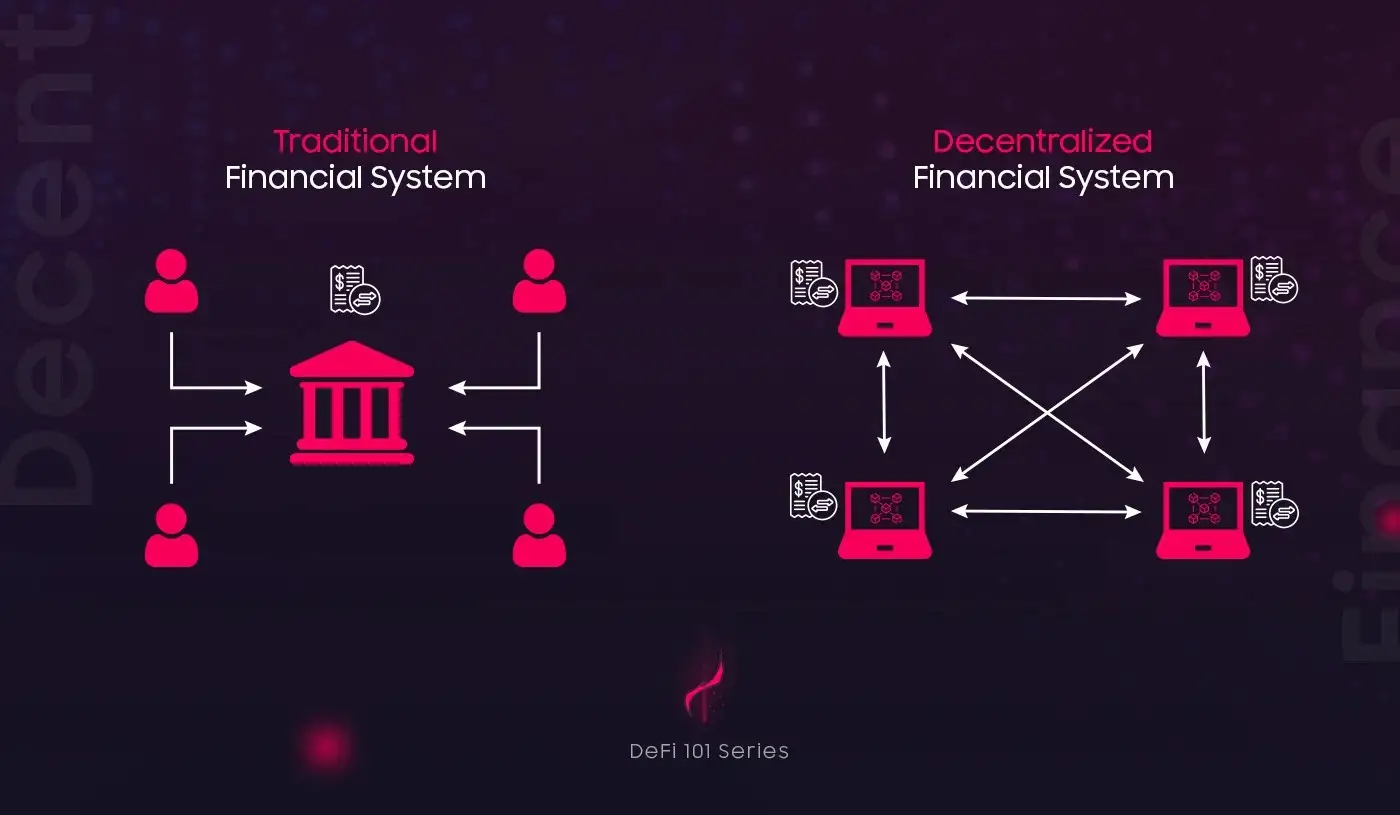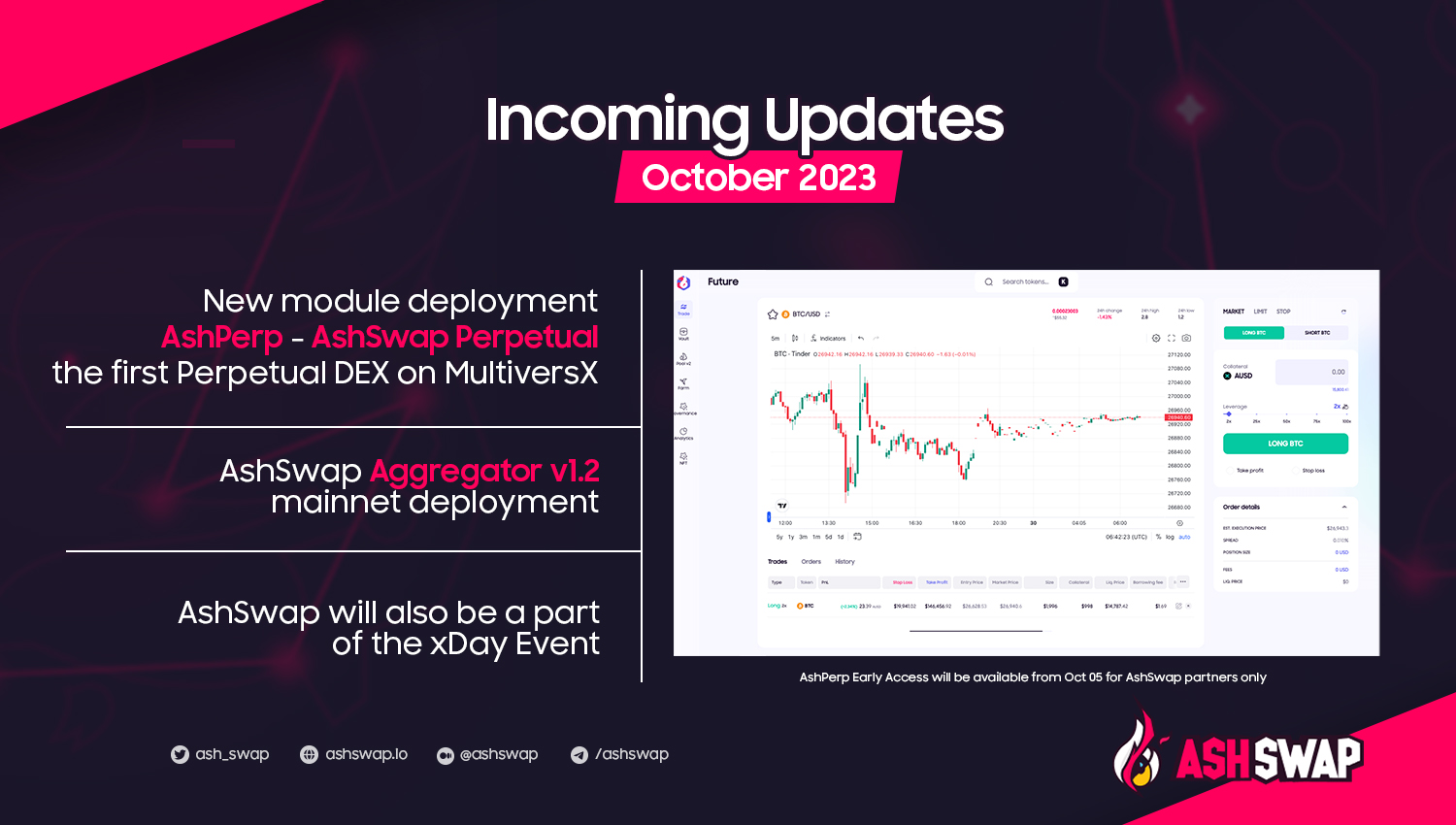What is Decentralized Finance (DeFi)?
Before getting to DeFi, we should start with CeFi — Centralized Finance.
What is CeFi?
Before DeFi was introduced, CeFi (Centralized Finance) was the standard for trading cryptos, it handles a stronghold over the cryptocurrency industry. These institutions offer a variety of services in addition to crypto trading, such as lending, borrowing, margin trading, and many more other services.
In CeFi, crypto trade orders are handled through a central exchange; funds are managed by the fund managers and professionals that work on the development & operational processes of these entities, which means you do not own a private key that provides you access to your wallet.
When participating in the CeFi, users need to trust third parties. That’s because users can only trade cryptocurrencies available on the CeFi platform & make transactions with the fee offered by that platform. You will only have limited access to what goes on with your wallet. It’s similar to what you experience when working with a bank.
What is DeFi?
DeFi stands for Decentralized Finance, which is a financial system in which all financial institutions and financial instruments are operated in a decentralized way. In other words, DeFi is a financial system where no central authority is needed.
Decentralized Finance aims to create a fair financial structure in which everyone can participate, even individuals without a bank account can use blockchain technology and DeFi. All the activities are not conducted by a central organization but automatically by the Smart Contracts (SC) of Blockchain.
The benefit of using DeFi over CeFi is that you have full control over your assets and own the key to your wallet.

Benefits Of DeFi
Traditional financial system is administrative & expensive to run, the transaction process takes time,… DeFi came to tackle a large number of these issues; some of its benefits are:
Trustless & Transparent
Thanks to smart contacts, each transaction can be completed & every single operation is directly recorded on the blockchain. With the blockchain explorers, anyone with an internet connection can check & verify what’s happening.
For example, when you make a transaction on AshSwap like swapping/ providing liquidity/ staking assets, you can find details of it on Elrond Explorer because AshSwap is built on the Elrond blockchain.
(if you want to know more about Elrond Explorer
And yet, you can still benefit from anonymity since the accounts you find are just a string of numbers and letters representing their public address.
These, and the fact that smart contracts don’t execute if their rules are not met, make the whole system trustless.
That’s how you’re in complete control of your assets; in DeFi.
Permission-less
DeFi welcomes everybody to the financial system regardless of their pay, race, culture, wealth, or geographic area. The requirement is a mobile phone, or a computer with an internet connection.
To use CeFi’s services, consumers must first undergo a know-your-customer (KYC) process, which requires them to give personal information or make a financial deposit.
Innovation opportunity
With more and more dApps — decentralized applications — appearing and rising rapidly today, we can see that smart contracts can be used to code pretty much anything. Besides, developers can freely expand on top of existing protocols, customize interfaces, and integrate third-party apps.
DeFi Applications in the Real World
dApps could be the best way to prove that blockchain technology is not only about crypto trading and investing but also bring cryptos to the real world, allowing the creation of complete businesses.
There are several use cases of DeFi we could see today, such as:
- If a foreign worker wants to send a huge amount of money across borders to their families using banking services, the fee he/ she has to pay is extortionate, while Decentralized Finance services come with the potential to cut down these costs by more than 50%
- Loans are another area where we can see the advantages of DeFi. It is very hard for the unbanked to borrow money because of their lack of credit score or a bad history with a banking institution, the DeFi platforms help connect borrowers with lenders & help reduce the credit check process.
- In the case when the bank has to be closed due to some unexpected reasons such as war, your asset is frozen & you are not able to withdraw, DeFi can solve this problem because you are in full control of your own crypto assets — in a simple way. Your key — your money.
By removing inaccuracies and middlemen, enhancing transparency, and reducing central control in the picture, DeFi is creating a promising future for finance
Challenges with DeFi
Despite the fast-growing speed from 2020 till now, DeFi still has many challenges to solve:
- Transaction Costs: Ethereum is one of the first movers and was considered the home of major DeFi protocols; but the problem is that with so many DeFi activities on a single network-Ethereum, there is a corresponding rise in transactions fees due to the high traffic on Ethereum network and the scaling limitations frequently lead to spiking gas charges. Other blockchains like Solana, Avalanche, and Elrond,… capitalize on Ethereum’s weakness to offer faster and cheaper solutions; and even with Ethereum, they are finding solutions to optimize the Transaction Costs with their Ethereum 2.0 roadmap.
- Liquidity: the low liquidity is also a challenge for DeFi protocols, different models have been adopted to help solve this problem such as incentivizing token holders to deposit their tokens in the asset pools and earn rewards generated from the trading activities, another solution is DEX aggregators (Arda, 1Inch Exchange, ParaSwap,…) which using complicated algorithm to get the best prices for users by access liquidity from different DEXs, not only a single DEX, allows users to access a wide range of trading pools through a single interface.
- Interoperability: there are many different Blockchain networks at this time with different designs, asset definitions, and access controls,… which is also a pain point for users in DeFi because of the difficulty in moving value from one blockchain to another, making it necessary to bridge blockchain networks for them to interact. This limits the potential for protocols to maximize functionality and scalability.
- Threat from hackers: while hacking is also a risk in traditional finance, DeFi’s extended technological architecture, with multiple potential weak points, increases the so-called attack surface available to sophisticated hackers, especially with the blockchain bridge, there were many reports like the attack to Horizon bridge on June 2022, Ronin bridge hack on March 2022
- DeFi Regulation: because DeFi protocols run on smart contract codes, and no legally recognized centralized entities can be held responsible for smart contract code problems, which leads to the lack of regulatory presence within the DeFi ecosystem, this is a significant problem to the mainstream adoption of DeFi. At this time, regulatory bodies are continuously making efforts to understand the DeFi space further to enable them to adopt effective regulatory architectures.
Users still need to take responsibility to take care of their privacy by understanding and securely handling cryptocurrencies with the process of multi-factor authentication.
Also, there have been far too many security & economic-related incidents, DeFi users also need to keep themselves updated with the new knowledge and the understanding of platforms they are interacting with.
Final Thought
Blockchain technology has managed to give people a Decentralized Finance with many of being advantages: trustless, permissionless, transparent, thereby having full control over their financial lives. DeFi is constantly improving itself to better meet users’ needs.
And if you want to keep up with the updates in the DeFi space, let’s take a look at our DeFi Handbook as a takeaway, and follow our AshSwap DeFi 101 series to have all the info you need.
Thank you for spending time reading our article.
AshSwap team.



